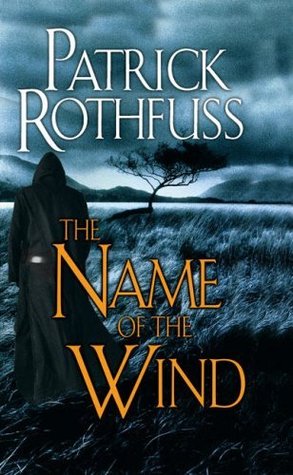Summary: I have stolen princesses back from sleeping
barrow kings. I burned down the town of Trebon. I have spent the night with
Felurian and left with both my sanity and my life. I was expelled from the
University at a younger age than most people are allowed in. I tread paths by
moonlight that others fear to speak of during day. I have talked to Gods, loved
women, and written songs that make the minstrels weep.
You may have heard of
me.
My thoughts: In
every story made, whether via book, show, movie, etc., there is always a way
for it to get better. From characters to plot points, there’s ways to enhance a
story. In this way, I don’t think I could ever call any piece of art form
perfect (even Breaking Bad). With
that being said, I would have to dig deep, re-read, and make immense, detailed
notes in order to find something to improve about The Name of the Wind.
I like all kinds of books, but when it really comes down to
it, a hero’s journey is what I love to read about the most. And a hero’s journey
is what I got in Kvothe/Kote’s story. What makes it more interesting is that
this isn’t the beginning of a journey. Technically the story within the story
starts from the beginning, but the actual story isn’t about beginnings. In
fact, it almost sounds like it’s close to the end. And because everyone (in the
story) knows different parts of his journey, he’s already become a legend,
which is not an aspect I’m used to reading about when learning about the
beginnings of a hero. This means that from the start, Kote sounded too good to
be true. But when he started to tell his story, and it differentiated from the
amazing adventures of the legendary Kvothe, his authenticity and lack of
perfection made me love him even more than if the legends had been 100% true.
It was exciting to see the beginnings of a legend. And to
see how the art of storytelling truly is a huge part of everyone’s culture,
fictional or otherwise. And the importance of words! The Name of the Wind shows that there is truly a power behind the
name of something, and that there is magic in understanding. Also, the world building
is AMAZING; the story’s intense, and just about every character in this book could
have a successful (spinoff) book.
What’s really amazing is that 672 pages later, I can say
that I’ve read a fantastic book, but I still don’t understand how Kvothe turned
into the man Kote. He lived a lot of life in the story within the story of The Name of the Wind, but it’s barely
just the tip of the iceberg.
Extra Love –
- The University he
attends: It’s like Hogwarts in the real world.
- Speaking of words, Patrick Rothfuss really knows how to
use them:
Prologue
A Silence of Three
Parts
It was night again. The Waystone Inn lay in silence, and it
was a silence of three parts.
The most obvious part was a hollow, echoing quiet, made by
things that were lacking. If there had been a wind it would have sighed through
the trees, set the inn’s sign creaking on its hooks, and brushed the silence
down the road like trailing autumns leaves. If there had been a crowd, even a
handful of men inside the inn, they would have filled the silence with
conversation and laughter, the clatter and clamour one expects from a drinking
house during the dark hours of night. If there had been music… but no of course
there was no music. In fact there were none of these things, and so the silence
remained.
Inside the Waystone a pair of men huddled at one corner of
the bar. They drank with quiet determination, avoiding serious discussions of
troubling news. In doing this they added a small, sullen silence to the larger,
hollow one. It made an alloy of sorts, a counterpoint.
The third silence was not an easy thing to notice. If you
listened for an hour, you might begin to feel it in the wooden floor underfoot
and in the rough, splintering barrels behind the bar. It was in the weight of
the black stone hearth that held the heat of a long-dead fire. It was in the
slow back and forth of a white linen cloth rubbing along the grain of the bar.
And it was in the hands of the man who stood there, polishing a stretch of
mahogany that already gleamed in the lamplight.
The man had true-red hair, red as flame. His eyes were dark
and distant, and he moved with the subtle certainty that comes from knowing
many things. They Waystone was his, just as the third silence was his. This was
appropriate as it was the greatest silence of the three, wrapping the others
inside itself. It was deep and wide as autumn’s ending. It was heavy as a great
river-smooth stone. It was the patient, cut-flower sound of a man who is
waiting to die.

No comments:
Post a Comment